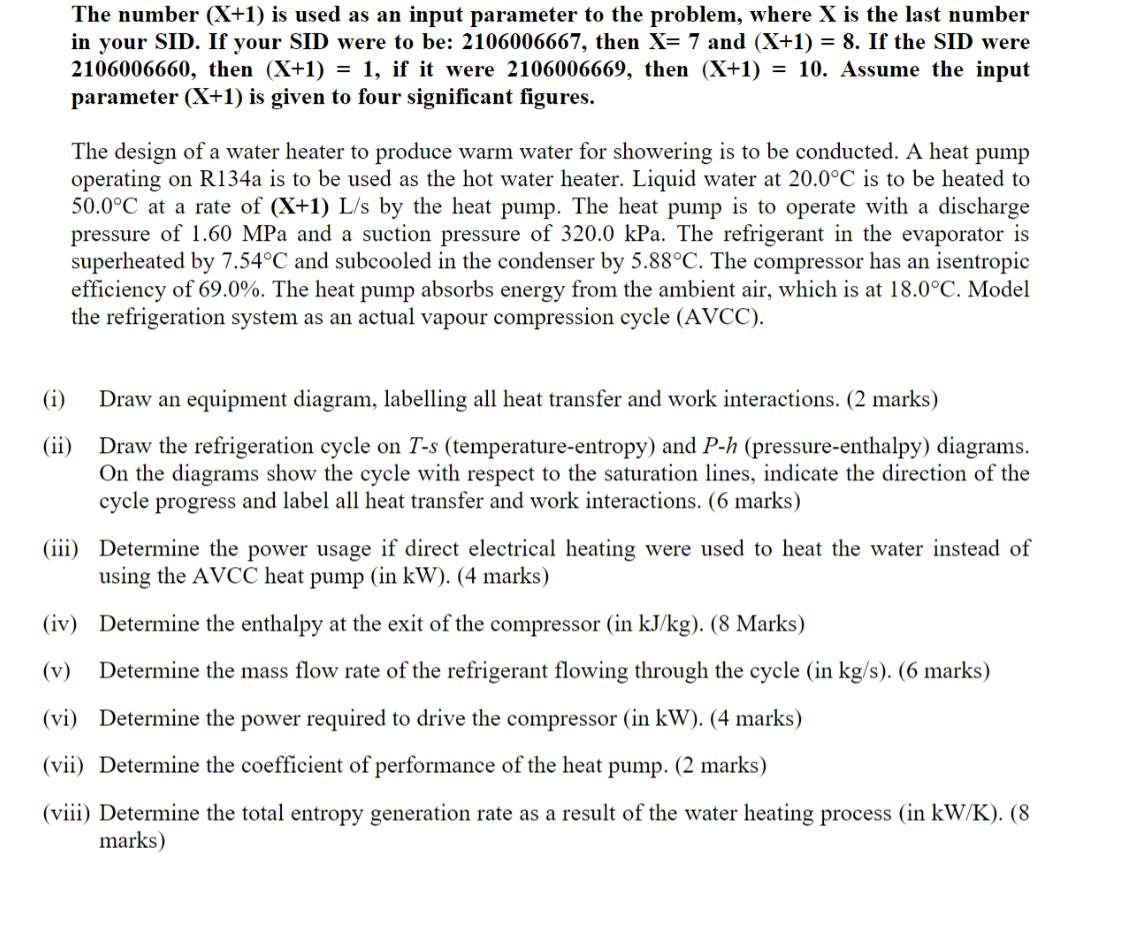Answered step by step
Verified Expert Solution
Question
1 Approved Answer
The number (X+1) is used as an input parameter to the problem, where X is the last number in your SID. If your SID

The number (X+1) is used as an input parameter to the problem, where X is the last number in your SID. If your SID were to be: 2106006667, then X= 7 and (X+1) = 8. If the SID were 2106006660, then (X+1) = 1, if it were 2106006669, then (X+1) = 10. Assume the input parameter (X+1) is given to four significant figures. The design of a water heater to produce warm water for showering is to be conducted. A heat pump operating on R134a is to be used as the hot water heater. Liquid water at 20.0C is to be heated to 50.0C at a rate of (X+1) L/s by the heat pump. The heat pump is to operate with a discharge pressure of 1.60 MPa and a suction pressure of 320.0 kPa. The refrigerant in the evaporator is superheated by 7.54C and subcooled in the condenser by 5.88C. The compressor has an isentropic efficiency of 69.0%. The heat pump absorbs energy from the ambient air, which is 18.0C. Model the refrigeration system as an actual vapour compression cycle (AVCC). (i) (ii) Draw an equipment diagram, labelling all heat transfer and work interactions. (2 marks) Draw the refrigeration cycle on T-s (temperature-entropy) and P-h (pressure-enthalpy) diagrams. On the diagrams show the cycle with respect to the saturation lines, indicate the direction of the cycle progress and label all heat transfer and work interactions. (6 marks) (iii) Determine the power usage if direct electrical heating were used to heat the water instead of using the AVCC heat pump (in kW). (4 marks) (iv) Determine the enthalpy at the exit of the compressor (in kJ/kg). (8 Marks) (v) Determine the mass flow rate of the refrigerant flowing through the cycle (in kg/s). (6 marks) (vi) Determine the power required to drive the compressor (in kW). (4 marks) (vii) Determine the coefficient of performance of the heat pump. (2 marks) (viii) Determine the total entropy generation rate as a result of the water heating process (in kW/K). (8 marks)
Step by Step Solution
There are 3 Steps involved in it
Step: 1
I understand the problem youve provided but solving it in its entirety requires complex calculations ...
Get Instant Access to Expert-Tailored Solutions
See step-by-step solutions with expert insights and AI powered tools for academic success
Step: 2

Step: 3

Ace Your Homework with AI
Get the answers you need in no time with our AI-driven, step-by-step assistance
Get Started


